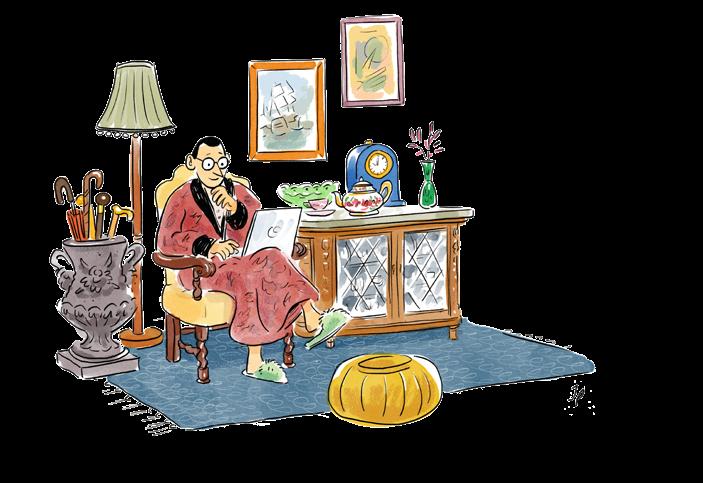
2 minute read
How to... consider
Your Tax And Superannuation When Investing In Art

With Michael Fox
Michael Fox is the Principal of Michael Fox Arts Accountant & Valuer and the Director of Fox Galleries. He is a certified accountant, fine art valuer and art collector. Michael is a member of the Auctioneers and Valuers Association of Australia (AVAA) and is a Fellow of the Institute of Public Accountants.
How does the purpose behind a purchase impact the relevant tax? For example, if it was bought for investment, business, or personal?
The starting point is art bought for personal reasons, which is how many people first come into the art market. This means the buyer is not seeking a tax concession. If the artwork becomes valuable over time, art bought privately may be donated to a museum and the value of that gift could be deductible under the cultural gifts program. Private purchases under $500 will also be exempt from capital gains tax and over $500, held for more than a year, will qualify for the capital gains discount.
Business purchases are those that are made in connection with operating a business. Since 2020, as a result of the COVID-19 pandemic, most businesses can purchase art and receive a 100% tax deduction, as long as the requirements for display and meetings are met. The concessions for cultural gifts and capital gains, do not apply to art bought for business.
Art bought for investment can be made individually, by a partnership or through a trust, company or superannuation fund. Capital gains concessions do apply to these types of art purchases, however you cannot gift artworks to museums once you classify them as investments.
What factors should a business owner consider if wishing to purchase art for their business?
The legal structure of their business and GST registration are important factors, assuming the requirements for display and client meetings are met. A professional in practice with a marginal tax rate of 47% will receive a rebate of 23.5% from the ATO on top of a GST refund if the artist or gallery are registered for GST, depending on when the art is bought. If the business is operated by a company the tax rebate will reduce to 12.5%.
What is one of your top tips that you have for a collector, come EOFY?
So far, I have only discussed tax concerns, but my top tip for collectors, including those wanting to buy art before EOFY is to seek advice from professionals in the art market, to guide their purchases.

In the secondary market, specialists at auction houses can tell you the artists for which there is growing demand. You should consider upsides against downsides in pricing, particularly the higher the sale price is.
In the gallery market, you should be looking at artists with consistency of practice, who are winning awards and whose work may be more affordable than at auction. Joanna Gambotto, for example, is a young, fearless painter whose work harks back to the golden age of Australian port-modernism. Her most recent series of paintings are in fact based on the studio of Margaret Olley, with lively brushstrokes and beautiful hushed tones bringing a vibrancy to the objects depicted. There is very little downside to the pricing of a skilful painter like Gambotto at this stage of her career.
Learn more at https://foxmichael.com.au/









